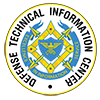Overcoming a Major Wave Energy Challenge
Abstract. This report summarizes the activities conducted under the DOE-EERE funded project DE-EE0006400, where ABB Inc. (ABB), in collaboration with Texas A&M’s Advanced Electric Machines & Power Electronics (EMPE) Lab and Resolute Marine Energy (RME) designed, derisked, developed, and demonstrated a novel magnetically geared electrical generator for direct-drive, low-speed, high torque MHK applications The project













